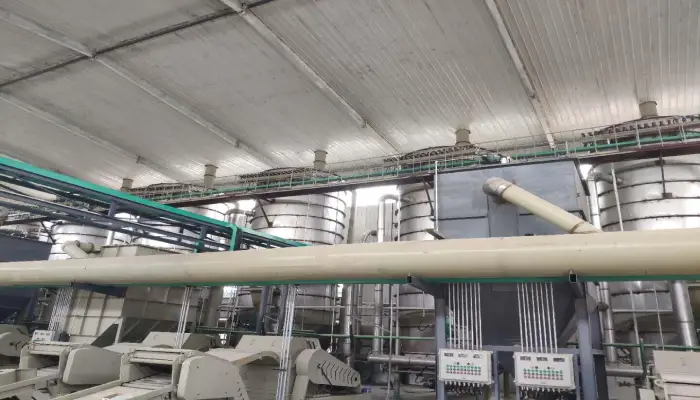
In diesem Artikel werden hauptsächlich die vier Produktionstechnologien und Formeln von HPMC beschrieben. Hydroxypropylmethylcellulose (HPMC) oder Hypromellose ist ein wasserlösliches nichtionisches Celluloseether-Polymer. Unsere HPMC-Produkte zeichnen sich durch gute Verdickungs-, Dispersions-, Emulgier-, Suspensions-, Adsorptions-, Oberflächenaktivitäts- und Wasserrückhalteeigenschaften aus und werden in verschiedenen Bereichen eingesetzt, z. B. Fliesenkleber, Produkte auf Gipsbasis, Zementmörtel, Farben und BeschichtungenKunstharze, Keramiken, Textilien, Landwirtschaft und tägliche Chemikalien, etc.
Entsprechend den unterschiedlichen Anforderungen an den Leistungsindex unterscheiden sich auch die Produktionstechnologien und -formeln von HPMC. Im Folgenden werden vier Produktionstechnologien und Formeln für HPMC dargestellt:
1. Die erste Art der Produktionstechnologien und Formeln von HPMC:
Das Aufschlämmungssystem besteht aus einer Mischung aus pulverisierter Zellulose im Verhältnis 80, NaOH im Verhältnis 26 und Toluol im Verhältnis 950. Wird NaOH im Verhältnis 106 mit einer Konzentration von 50% in das Aufschlämmungssystem gemischt und 30 Minuten lang erhitzt, werden Methanol und Wasser abdestilliert. Dann werden CH3X mit einem Verhältnis von 120 und Propylenoxid mit einem Verhältnis von 10 in das Aufschlämmungssystem gegeben und 1,5 Stunden lang bei einer Temperatur von 60-120° C zur Reaktion gebracht. Das Endprodukt ist wasserlöslich mit einem Methylsubstitutionsgrad von 2,0 und einer Hydroxypropylsubstitution von 0,1.
2. Die zweite Art der Produktionstechnologien und Formeln von HPMC:
Unter der Bedingung der Sauerstoffisolierung sollten die zerkleinerte Zellulose, 50%-Lauge, Propylenoxid und Methylchlorid im Verhältnis 20:40:90:200 in den Aufschlämmungstank gegeben werden. Die Aufschlämmung wird unter ständigem Rühren bei einem Druck von 1,7-1,9 MPa und einer Temperatur von 80°C in den Reaktor gepumpt, wobei jeder Rührvorgang etwa 30 Minuten dauert. Die Aufschlämmung wird dann unter einem Druck von 1,7-1,9 MPa zur Wasch- und Reinigungsstufe befördert, um eine Methoxygruppe von 27,5% (Massengehalt) und eine Hydroxypropylgruppe von 6,5% zu erhalten. Das Produkt ist wasserlöslich mit einer Viskosität von 14000Pa. S.
In einem ähnlichen Verfahren werden die zerkleinerte Zellulose, 50%-Lauge, Propylenoxid und Methylchlorid im Verhältnis 20:36:90:130 bei einem Druck von 1,7-1,9 MPa und einer Temperatur von 80℃ im Reaktor unter ständigem Rühren gemischt, was jedes Mal etwa 30 Minuten dauert. Das resultierende Produkt ist löslich in Methanol mit 20,5% Methoxygruppe (Massengehalt) und 0,5% Hydroxypropylgruppe.
3. Die dritte Art der Produktionstechnologien und Formeln von HPMC:
Für bestimmte Industriezweige, z. B. Produktionstechnologien und -formeln für HPMC in der Beschichtungsindustrie, ist es notwendig, Folgendes zu verwenden in Alkohol und Wasser co-lösliche Hydroxypropylmethylcellulose (HPMC) Produkte, wodurch die Verwendung von Methanol und Dichlorethan vermieden werden kann. Alkohol-Wasser-Ko-lösliches HPMC ist ein HPMC-Produkt mit hohem Hydroxypropylgehalt, das auch in Tabletten, verschiedenen wasserlöslichen Überzügen und wasserfreien Alkohollösungen verwendet werden kann. Alkohol-Wasser-ko-soluble HPMC hat Thermoplastizität und Wasserlöslichkeit. Sein strukturelles Merkmal ist, dass es 0,4-0,8 Methyl-DS und 1,5-1,8 Hydroxypropyl-MS enthält, und die Summe von Methyl-DS und Hydroxypropyl-MS muss mehr als 1,8 betragen.
Für die Synthese von in Alkohol und Wasser gemeinsam löslicher Hydroxypropylmethylcellulose müssen 1,54 Einheiten Propylenoxid und 0,4 bis 0,8 Teile Methylchlorid zur Veretherung gemischt werden, und jeder Teil Cellulose entspricht 0,35 bis 0,4 Teilen Alkali.
4. Die vierte Art der Produktionstechnologien und Formeln von HPMC:
Bei diesem Herstellungsverfahren kann das Produkt Hydroxypropylmethylcellulose in absolutem Ethanol gelöst werden. Zunächst wird pulverisierte raffinierte Baumwolle und wässrige NaOH-Lösung mit einer Konzentration von 50% im Verhältnis 20:14 hergestellt. Dann werden Propylenoxid und Methylchlorid zugegeben und im Verhältnis 80:16 gründlich gemischt. Anschließend wird die vollständig gemischte Paste innerhalb von 90 Minuten allmählich auf 60℃ erhitzt und 5,5 Stunden lang umgesetzt. Schließlich kann das Endprodukt nach dem Entladen und der Nachbearbeitung gewonnen werden. Der Substitutionsgrad der Methylgruppe liegt bei 0,58 und der der Hydroxypropylgruppe bei 1,58.
Das Endprodukt lässt sich schnell in absolutem Ethanol auflösen und bildet eine transparente, farblose und viskose Lösung. Es ist auch in Wasser löslich, und die Geltemperatur in Wasser beträgt 43℃. Das Produkt kann als wasserlöslicher Überzug oder als transparenter und wasserlöslicher Film in pharmazeutischen Tabletten verwendet werden.
5. Zusammengefasst
Um den besonderen Anforderungen verschiedener Bereiche gerecht zu werden, haben wir neue Technologien und Formeln für HPMC entwickelt, wie z. B. die Erforschung des kontinuierlichen Produktionsprozesses von HPMC. Neben der Hydroxyalkylmethylcellulose wurden auch andere Mischether entwickelt. Es wurde ein wasserlöslicher gemischter Ether mit drei Substituenten entwickelt: Alkyl, Carboxymethyl und Hydroxyalkyl, zum Beispiel Hydroxypropylmethylcellulose (HPMC). Mit der modifizierten Zeisel-Methode oder chromatographischen Technik können die Methoxygruppe und eine Hydroxyalkoxygruppe analysiert werden.
MIKEM Unsere Techniker haben kontinuierlich verschiedene Produktionstechnologien und Formeln für HPMC entwickelt und verschiedene Qualitäten und Kategorien von HPMC-Produkten angepasst, um die spezifischen Bedürfnisse der Kunden aus verschiedenen Branchen zu erfüllen. Unsere Techniker sind immer verfügbar, um alle Ihre Fragen beantworten und bieten Ihnen maßgeschneiderte Formeln und einen individuellen Service.


Eine Antwort hinterlassen